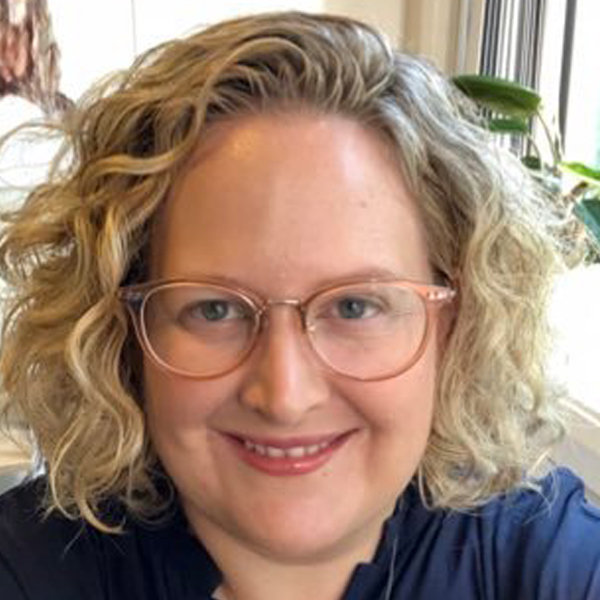Experience-based co-design (EBCD) is a method for healthcare quality improvement where experiences guide what ought to change in a service, organisation or in relation to a specific issue, topic or health care approach. Personal stories are gathered and shared using qualitative methods from consumers, staff and carers to develop understanding and to identify the areas for change. This sets out objectives for changes (or solutions) to be co-designed and implemented in local settings (1, 2).
Published findings from EBCD projects consistently point to: relational and power dynamics, variability in implementation, impact and sustained co-designed changes as challenges (3-5). System and structural factors, context and values of participants and organisations all shape this. Yet, co-design resources and toolkits typically appear to focus on:
- Engagement: generating buy-in for projects.
- Gathering: methods to share experiences and identify change areas.
- Facilitation techniques: co-design approaches such as storyboarding, journey or emotion mapping, personas or, prototyping.
- Celebration events: sharing back achievements.
Though power sharing and shared decision-making feature as prominent principles to uphold in EBCD, few toolkits and resources detail explicit frameworks to ensure these are implemented in practice. McKercher’s (2021) ‘Beyond Sticky Notes’ provides some complimentary resources for co-design readiness including mindsets and a model of care (6). However, limited attention appears to have been given to the space between participation in sharing experiences and identifying changes, to co-design; referred to as the ‘co-design preparedness space’. It is our view that the space between participation and co-design offers potential for preparedness work that orients people to power dynamics, decision-making and co-design techniques and the frameworks that might be used (4). A serious board game might provide one option for this.
Research has found that serious board games can increase knowledge, enhance interpersonal interactions among participants, and encourage in-depth discussion on health matters (7-9). Games are coined ‘serious’ when there is a pedagogical purpose. They are defined as ‘an interactive virtual application, with or without a significant hardware component, that has a challenging goal, is fun to play with, incorporates some concept of scoring, and imparts in the user a skill, knowledge or attitude which can be applied in the real world (10).
One approach to preparedness for co-design could be to utilise eight mechanisms of change articulated in an explanatory theoretical model of change for co-design and co-production in healthcare improvement (11). These mechanisms are viewed as critical ingredients to foster sustained changes from co-design projects. They include recognition (of lived-experiences of focus area), dialogue (importance of multi-directional conversation), cooperation (working together), accountability (being responsible for change), mobilisation (taking ownership for change), creativity (use of design thinking and methods), enactment (bringing change to life) and attainment (implementation of change). The mechanisms sit within ideal relational transitions that may or may not emerge within co-design participation but can be applied to explain outcomes.
This brief design outline describes an initial prototype for a serious board game called ‘Team Up’ to support co-design preparedness.
Approach
The initial theoretically informed serious board game prototype was called ‘Team Up’. It was developed as a collaboration between the Agency for Clinical Innovation in NSW and the University of Melbourne. The first iteration of the prototype was created specifically for consumers and staff involved in a local quality improvement project using EBCD across two hospitals. The game was planned to be played within a series of training activities and importantly to follow on from when staff and consumers had had individual orientation activities to discuss power dynamics prior. Initial prototype development began in November 2019 with a day-long workshop to co-create ideas and the first prototype was completed in February 2020 when the COVID-19 pandemic hit.
Team Up: an initial prototype for a serious board game for co-design preparedness
The first prototype for Team Up consisted of a board, eight element cards (referring to the mechanisms of change with descriptions of core parts), play-all cards and eight 3-minute interactive activities, 4 player pieces and dice (see Figure 1 for set up example). Customised art for the eight mechanisms of change to create elements and play-all cards was hand drawn by Natalie Seiler.
Game rules are for 4 to 5 teams (8-10 players) to play together until one team has gathered all eight elements cards. Teams are comprised of a staff-consumer dyad (a triad may be possible – staff, consumer, carer – but requires further testing). Pairing staff and consumers happens after individual orientation work to facilitate relational connection for co-design. The setup of the game has play-all deck of cards placed in the board’s middle box. Matching elements cards are placed image-side-up on each element’s boxes around the board. The dice is rolled by each team and when players land on an elements square, they read the card aloud and then keep that card. If a team already has an element card and lands on this again, they can collect an extra element card to prevent other team members from gathering cards (this allows competition to be discussed after and to explore the benefits of working cooperatively).
Scattered around the board are boxes where players may miss a turn or take a card from another team. If players land on the play-all box, they pick up from the middle deck and read the instructions aloud, and all teams participate in an interactive activity. These interactive activities are designed to create a learning scenario about the core ingredients of the eight elements to foster co-design preparedness. The game continues until one team has all eight elements.
Where to next ?
It is our view that processes and outcomes for EBCD could be enhanced by further attention to co-design preparedness. There is opportunity to attend to this in the space between participation in experience sharing and change identification and, co-design. Attending to this space is important for addressing power and being explicit about decision-making frameworks that enable collaborative practices within co-design. A serious board game may provide one option. This initial prototype is now in a co-design phase of testing and refinement and will subsequently be adapted to an online version to ensure reach and scalability.
About the authors
 Tara Dimopoulos-Bick is the Evidence Generation and Dissemination Manager – Experiential Evidence at the NSW Agency for Clinical Innovation and she has a Social Work background. Tara’s work focuses on bringing the knowledge, expertise and wisdom from individuals and groups to the forefront as part of the ACI’s evidence model. Her interests include participatory research methods, shared decision making and positioning patient experience as a form of evidence.
Tara Dimopoulos-Bick is the Evidence Generation and Dissemination Manager – Experiential Evidence at the NSW Agency for Clinical Innovation and she has a Social Work background. Tara’s work focuses on bringing the knowledge, expertise and wisdom from individuals and groups to the forefront as part of the ACI’s evidence model. Her interests include participatory research methods, shared decision making and positioning patient experience as a form of evidence.
 Associate Professor Victoria Palmer completed a PhD in applied ethics examining cooperative practices and the formation of moral and ethical communities using narrative theory. She is the Director of a National Research Translation Centre to implement Mental Health Care at Scale in primary care and community settings (ALIVE) funded by an NHMRC special initiative in mental health. Victoria leads a Co-Design Living Lab program in integrated mental health which embeds end to end involvement of people with lived experience of mental health needs and carers in research design to translation. She has expertise in participatory design for health systems transformation, experience-based co-design, co-production, mixed-method research and mental health in primary care. Victoria is the investigator for a primary care trial to improve heart health for people who live with severe mental illnesses using a coproduced intervention.
Associate Professor Victoria Palmer completed a PhD in applied ethics examining cooperative practices and the formation of moral and ethical communities using narrative theory. She is the Director of a National Research Translation Centre to implement Mental Health Care at Scale in primary care and community settings (ALIVE) funded by an NHMRC special initiative in mental health. Victoria leads a Co-Design Living Lab program in integrated mental health which embeds end to end involvement of people with lived experience of mental health needs and carers in research design to translation. She has expertise in participatory design for health systems transformation, experience-based co-design, co-production, mixed-method research and mental health in primary care. Victoria is the investigator for a primary care trial to improve heart health for people who live with severe mental illnesses using a coproduced intervention.
Acknowledgements: The authors would like to acknowledge the contributions of Helen Kulas Respiratory Network Manager for the Agency for Clinical Innovation, NSW Health for the co-creation of the initial prototype ‘Team Up’ as part of an Experience-Based Co-Design quality improvement project to change oxygen use for chronic obstructive pulmonary disease; ‘Bursting the Bubble’. The authors also acknowledge the contributions of the author team to the original explanatory theoretical model of change for co-design and co-production in healthcare improvement.
REFERENCES
- Bate P, Robert G. Experience-based design: from redesigning the system around the patient to co-designing services with the patient BMJ Quality & Safety 2006:307-10.
- Robert G, Cornwell J, Louise L, Purushotham A, Sturmey G, Gager M. Patients and staff as codesigners of healthcare services. BMJ. 2015.
- Dimopoulos-Bick T, Dawda P, Maher L, Verma R, Palmer JV. Experience-Based Co-Design: Tackling common challenges JHD. 2018;3(1):86-93.
- Dimopoulos-Bick T, O’Connor C, Montgomery J, Szanto T, Fisher M, Sutherland V, et al. “Anyone can co-design?”: A case study synthesis of six experience-based co-design (EBCD) projects for healthcare systems improvement in New South Wales, Australia. Patient Experience Journal 2019;6(2):93-104.
- Donetto S, Pierri P, Tsianakas V, Robert G. Experience-based Co-design and Healthcare Improvement: Realizing Participatory Design in the Public Sector. The Design Journal. 2015;18(2):227-48.
- McKercher KA. Beyond Sticky Notes 2021 [Available from: https://www.beyondstickynotes.com/about-1].
- Noda S, Shirotsuki K, Nakao M. The effectiveness of intervention with board games: a systematic review. Biopsychosoc Med. 2019;13:22.
- Ward M, Ní Shé É, De Brún A, Korpos C, Hamza M, Burke E, et al. The co-design, implementation and evaluation of a serious board game ‘PlayDecide patient safety’ to educate junior doctors about patient safety and the importance of reporting safety concerns. BMC Med Educ. 2019;19(1):232.
- Akl EA, Kairouz VF, Sackett KM, Erdley WS, Mustafa RA, Fiander M, et al. Educational games for health professionals. Cochrane Database Syst Rev. 2013;2013(3):Cd006411.
- Gorbanev I, Agudelo-Londoño S, González RA, Cortes A, Pomares A, Delgadillo V, et al. A systematic review of serious games in medical education: quality of evidence and pedagogical strategy. Med Educ Online. 2018;23(1):1438718-.
- Palmer JV, Weavell W, Callander R, Piper D, Richard L, Maher L, et al. The Participatory Zeitgeist: an explanatory theoretical model of change in an era of coproduction and codesign in healthcare improvement BMJ 2018 1-11.
